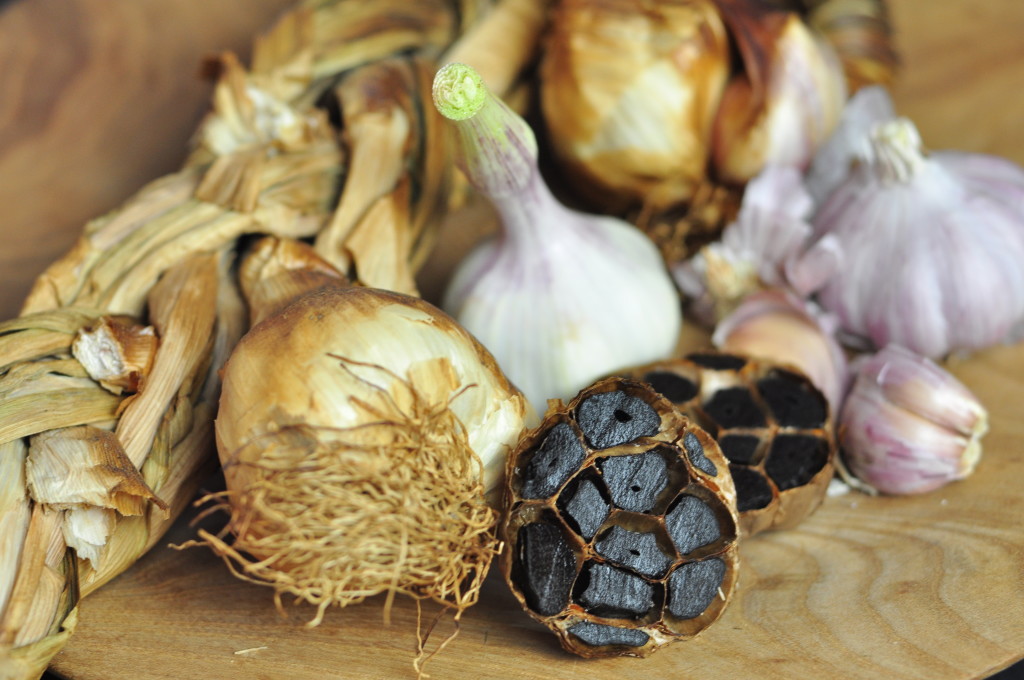Mention “black garlic” to a culinary aficionado, and you might hear about its sweet, tangy flavor and distinctive soft, sticky texture. The transformation from pungent white cloves to dark, jammy black garlic is often loosely described as “fermentation,” but the key behind the scenes is actually the Maillard reaction. This chemical process, usually associated with the browning of foods, is central to the unique taste, color, and texture that have made black garlic a rising star in both home kitchens and gourmet restaurants. Below, we’ll dive deeper into the science behind this remarkable reaction—and what makes black garlic so special.
A Quick Refresher: What Is the Maillard Reaction?
Named after French chemist Louis-Camille Maillard, the Maillard reaction is a form of non-enzymatic browning that occurs when amino acids and reducing sugars interact under heat. You’ve seen it happen when you toast bread, sear steak, or roast coffee beans—the outer layers take on a rich brown color and develop complex flavors.
In black garlic’s case, the reaction doesn’t occur in a scorching-hot environment, but rather in a low-temperature, high-humidity setting. Over time—often two to six weeks—these slow-cooked conditions allow the Maillard reaction to progress gradually, transforming fresh garlic into a dark, sticky product.
How the Maillard Reaction Shapes Black Garlic
1. Brown Pigments and “Black” Color
As the reaction unfolds, garlic’s amino acids and sugars form melanoidins, which are pigments ranging in color from golden brown to deep black. These compounds are what give black garlic its characteristic hue.
-
Melanoidins: Often responsible for the brown crust on baked bread or roasted coffee beans, melanoidins also have antioxidant properties, which may help explain why black garlic is sometimes hailed as a nutritional powerhouse.
2. Complex Flavor Development
Raw garlic is famously pungent due to sulfur-containing compounds like allicin. Prolonged aging and the Maillard reaction significantly reduce garlic’s sharpness and create new flavor molecules.
-
Sweet & Savory: The heat and humidity break down garlic’s natural sugars and amino acids, producing a sweet, tangy, umami-rich taste that’s reminiscent of dried fruit, balsamic vinegar, or even chocolate.
-
Balanced Aromas: Sulfur notes become more subdued, allowing nuanced flavors to shine through. This is why black garlic can be enjoyed straight from the bulb without the overpowering aftertaste of raw garlic.
3. Textural Transformation
Once crisp, juicy cloves turn soft, sticky, and almost jelly-like.
-
Moisture Retention: Controlled humidity prevents the cloves from drying out, locking in moisture while still allowing enough dehydration for the Maillard reaction.
-
Increased Tenderness: Proteins and fibers within the garlic break down slowly, resulting in a texture perfect for spreading on bread or blending into sauces.
The Role of Temperature and Humidity
Contrary to common belief, black garlic isn’t “burned” or exposed to extremely high heat. Instead, temperatures typically range between 60–90 °C (140–190 °F), with humidity levels around 80–90%. Maintaining these conditions for weeks at a time is crucial:
-
Steady Heat: Fuels the Maillard reaction but avoids scorching or rapid caramelization.
-
High Humidity: Ensures the cloves remain soft and juicy rather than turning rock-hard.
-
Time Factor: The Maillard reaction usually happens quickly at higher temperatures (like when searing meat), but black garlic’s transformation is all about slow cooking under consistent conditions.
Health and Nutritional Aspects
Though the Maillard reaction was once primarily associated with delicious browning effects, ongoing research suggests it can also produce biologically active substances that may benefit health.
-
Antioxidants: Compounds like S-allylcysteine (SAC) and melanoidins might have increased antioxidant activity compared to those in raw garlic.
-
Digestive Friendliness: Many people find black garlic easier to digest because the intense sulfur compounds have been mellowed out during the aging process.
-
Still Under Study: While some studies link black garlic to potential heart health, immune support, and anti-inflammatory effects, it’s important to note that many of these findings are preliminary.
Cooking with Black Garlic
Because of its milder flavor and sticky texture, black garlic has a range of culinary possibilities:
-
Spreads and Dips: Mash cloves into butter, hummus, or aioli for a sweet-savory twist.
-
Salad Dressings: Blend with olive oil, vinegar, and herbs to create a balanced vinaigrette.
-
Soups and Stews: Stir in near the end of cooking to add depth without overpowering other ingredients.
-
Pizza and Pasta Toppings: Dice or puree and layer it onto your favorite carb-heavy dish for that extra umami punch.
Debunking the Fermentation Myth
Though black garlic is often labeled as “fermented,” the Maillard reaction is the primary driver of its transformation. True fermentation typically involves microbes (like bacteria or yeast) breaking down sugars. In black garlic, the changes in color and flavor are mostly due to chemical reactions between amino acids and sugars under controlled heat, rather than microbial activity.
Final Thoughts
The journey from fresh garlic to black garlic is a testament to the Maillard reaction’s culinary prowess. By slowly browning at relatively low temperatures, the garlic develops a sweet, savory, and complex profile that can elevate countless dishes. From the creation of melanoidins responsible for its dark color to the mellowed sulfur compounds that allow its sweetness to shine, every aspect of black garlic speaks to the transformative magic of this reaction.
Whether you’re a seasoned chef or a curious home cook, experimenting with black garlic is a delicious way to appreciate the intersection of chemistry and cuisine. With its mild punch, delightful texture, and potential health benefits, black garlic is an ingredient well worth adding to your culinary repertoire—and now you know the science behind why it’s so special.

Comments (0)
No comments yet. Be the first to comment!